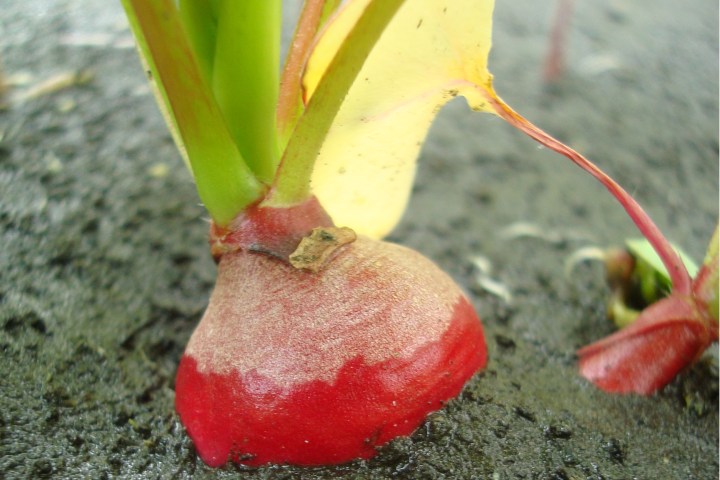
The Mars and moon soil simulants were provided by NASA, which developed the artificial soils to mimic their celestial counterparts as closely as possible. The Mars soil substitute originated from a Hawaiian volcano, while the moon soil came from an Arizona desert. In the first round of studies, the researchers used the simulated soil without any amendments and grew the plants in small pots. They struggled with watering the plants and recorded weak growth, especially in the moon-simulated soil. At the end of these first experiments, all of the moon-grown plants had died.
In the second round of experiments, the team replaced the pots with small trays, which often are used to grow seedlings before planting. They also added a small amount of organic material (fresh cut grass and manure) to the moon and the Martian soil substitutes. They began the experiment in April 2015, planting ten different crop species (tomato, rye, radish, pea, leek, spinach, garden rocket, cress, quinoa and chives) that were cultivated in a greenhouse. The greenhouses were designed to simulate the underground growing chambers Martian settlers may use. The Martian and Moon-soil plants were grown alongside compost-grown plants, which served as a control.
Researchers harvested the crops in October 2015, weighing their biomass to compare growth. Not only did the researchers successfully grow tomatoes, peas, rye, garden rocket, radish and garden cress in the Martian simulated soil; the yields of these crops were similar to the yields recorded for earth-based compost. “The total above ground biomass produced on the Mars soil simulant was not significantly different from the potting compost we used as a control,” said researcher Dr Wieger Wamelink.
Researchers were pleased with the outcome. “It shows that the Mars soil simulant has great potential when properly prepared and watered,” said Wamelink. Though the results are encouraging, the researchers still have a few more obstacles to conquer before they can use the crops as a food source. The biggest stumbling block is the possible presence of heavy metals in the plants due to the composition of the soils, which contain detectable levels of lead, arsenic and mercury. The researchers are conducting a third round of studies that will begin this spring. The goal of this upcoming experiment is to grow edible food with little to no heavy metal contamination. The resulting plants will be prepared and served as a “Martian Meal” to the individuals and groups who are funding this project.




